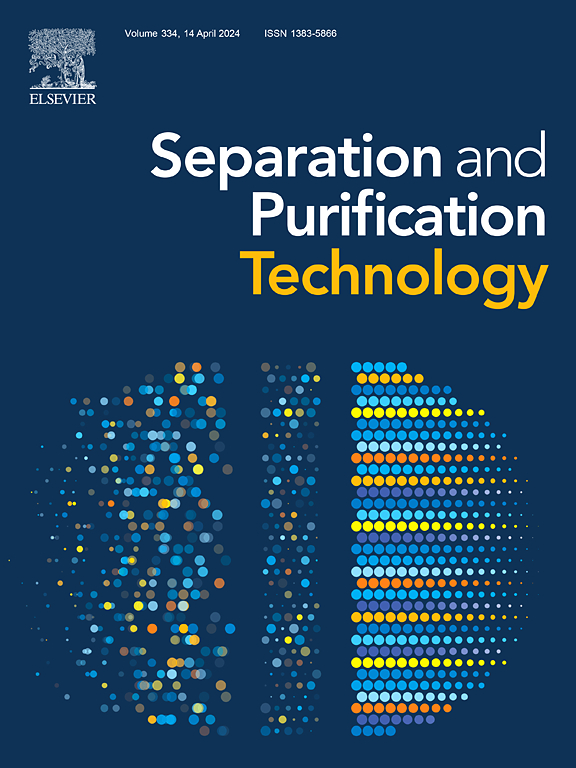Enhanced carbon sequestration via phosphogypsum utilization in Conjunction with concrete wastewater treatment
IF 8.1
1区 工程技术
Q1 ENGINEERING, CHEMICAL
引用次数: 0
Abstract
The simultaneous utilization of concrete wastewater (CW) and phosphogypsum (PG) to mineralize CO2 for carbon reduction is a green and low-carbon treatment method. In this work, the combined carbonation process of CW and PG and the role of ammonia as an additive were investigated. The addition of ammonia balances the excess cations, inhibits CaCO3 resolvation, and enhances the gas–liquid mass transfer. The higher pH and ionic strength of CW help to accelerate the PG dissolution and increase the PG conversion rate. Simultaneously, a decalcification efficiency of 100 % for CW and a PG conversion rate of 98.00 % were achieved. This process resulted in a CO2 capture of 215.76 g CO2/kg PG, with the pH of the synergistically treated wastewater ranging from 6.43 to 7.54. Additionally, the common ionic effect of Ca2+ and SO42−, the salting effect of CW, and the salting-out effect of CO2 influenced the reaction. The formation of vaterite under pressurized conditions was primarily governed by pH, which played a key role in determining the crystal morphology. The interaction between CW and PG was further confirmed in 5 L scale-up experiments, during which ammonia recycling was also achieved. This study fully utilized CW, combining it with PG to efficiently repurpose wastewater and solid waste for resource recovery.

结合混凝土废水处理利用磷石膏加强碳固存
同时利用混凝土废水(CW)和磷石膏(PG)矿化二氧化碳以减少碳排放是一种绿色低碳处理方法。在这项工作中,研究了 CW 和 PG 的联合碳化过程以及氨作为添加剂的作用。氨的加入平衡了过量的阳离子,抑制了 CaCO3 的解析,并增强了气液传质。CW 较高的 pH 值和离子强度有助于加速 PG 溶解并提高 PG 转化率。同时,CW 的脱钙效率达到 100%,PG 转化率达到 98.00%。该工艺的二氧化碳捕获量为 215.76 克 CO2/千克 PG,协同处理后废水的 pH 值为 6.43 至 7.54。此外,Ca2+ 和 SO42- 的共同离子效应、CW 的盐化效应以及 CO2 的脱盐效应也对反应产生了影响。在加压条件下,钒钛铁矿的形成主要受 pH 值的影响,pH 值在决定晶体形态方面起着关键作用。在 5 L 的放大实验中,CW 和 PG 之间的相互作用得到了进一步证实,在此期间还实现了氨的循环利用。这项研究充分利用了 CW,将其与 PG 结合起来,有效地将废水和固体废物重新用于资源回收。
本文章由计算机程序翻译,如有差异,请以英文原文为准。
求助全文
约1分钟内获得全文
求助全文
来源期刊

Separation and Purification Technology
工程技术-工程:化工
CiteScore
14.00
自引率
12.80%
发文量
2347
审稿时长
43 days
期刊介绍:
Separation and Purification Technology is a premier journal committed to sharing innovative methods for separation and purification in chemical and environmental engineering, encompassing both homogeneous solutions and heterogeneous mixtures. Our scope includes the separation and/or purification of liquids, vapors, and gases, as well as carbon capture and separation techniques. However, it's important to note that methods solely intended for analytical purposes are not within the scope of the journal. Additionally, disciplines such as soil science, polymer science, and metallurgy fall outside the purview of Separation and Purification Technology. Join us in advancing the field of separation and purification methods for sustainable solutions in chemical and environmental engineering.
 求助内容:
求助内容: 应助结果提醒方式:
应助结果提醒方式:


